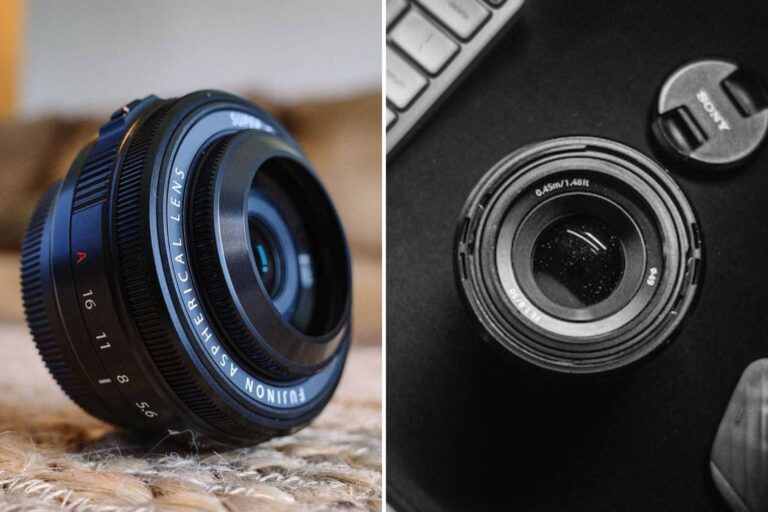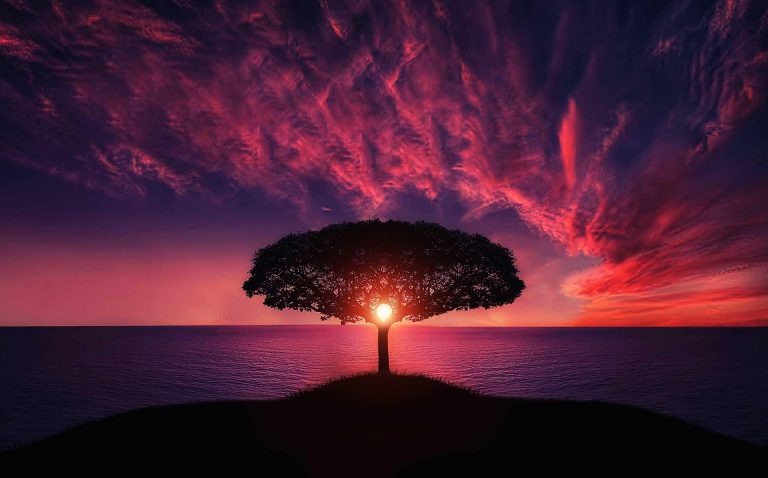57 Street Photography Tips for Better Street Shots

Street photography is a great way to capture the everyday beauty around us. It’s a form of documentary photography where the photographer captures candid moments from everyday life.
Street photos are typically taken in urban environments such as city streets, parks, and other public spaces.
I’ve been doing street photography for almost a decade now and thought I would put together the things I’ve picked up along the way in these street photography tips.
Street Photography Tip #1) Get Inspired by Street Photographers You Respect
One of the best ways to get inspired to shoot street photography is to study the masters. For a good reason, the masters are the masters: they put in the time and work to develop a body of work with their own style.
In my opinion, the best way to learn from these great photographers is to buy their books. Physical books are more tactile and tangible than viewing street photography on a small digital screen. In addition, larger prints let you better explore the entire frame of a photograph.
Street photography books give you insight into how street photography can work as a collection of images rather than just standalone photos. This also gives you insight into how a photographer went about selecting their photos to create a cohesive narrative of a place or theme.
If you’re on a budget or have limited space for books, then, of course, there’s nothing wrong with studying the greats online. The important thing is that you discover what street photographers have done before you and take away the visual lessons you can learn from them that resonates with you the most.
2) Emulate Your Favorite Photographers
Much of art is built on top of and inspired by the works of previous artists. Modern painters use more advanced techniques than painters from our earliest recorded histories.
The same can be said for music. Bands like Led Zeppelin, The Beatles, and The Rolling Stones all took inspiration from blues musicians that came before them. And modern musicians have taken inspiration from the ’60s and ’70s music eras, and on and on.
It’s no surprise then that street photography has evolved similarly. Early street photographers like Henri Cartier-Bresson were working with more primitive film cameras and lenses, which led them to shoot in certain styles and ways of shooting. Later street photographers like Alex Webb were inspired by early street photographers and took the genre to new places.
The point is that street photographers throughout the history of the practice had taken inspiration from the photographers who came before them and likely spent a good deal of time emulating them before developing their own style. So out of any street photography tips I can give, arguably the most important is to study the greats and put your own spin on it.
3) Get Motivated
Related to the last sections, one thing that motivates me to get out and create street photography is going through the work of photographers I admire. When I see photos from my favorite street photographers, it makes me want to create my own body of work. Then, when I’m old, I want to look back on my life with the satisfaction of knowing I created something special that future generations will be able to enjoy.
When I’m tired or don’t feel like leaving the house, thinking about the body of work I’ll have in the future can be the kick in the ass I need to motivate me. You never know when a great photo opportunity will occur, and every street photography session allows you to capture those moments. But you have to get out there and be ready for it.
You’ll naturally gravitate towards street photographers that you like. Find out which photographers those are and draw inspiration from them.
4) Live in a Downtown Area
It’s easier said than done but moving to a busy area can greatly improve your life as a street photographer. After all, William Eggleston made a fantastic body of street photography-related work out in the suburbs of Mississippi and Tennessee, but that’s the exception rather than the rule.
If you don’t mind photographing street scenes and cityscapes without people in them, then where you live is less important.
On the other hand, if you want to include people in your street photos (which is what street photography is most associated with), then living where the action is can really help. When you live in a downtown or other well-trafficked area, you have more opportunities to include people in your photos. So you have easy access to just walk out of your house and start photographing. The easier the access you have to do street photography, the more likely you are to do it. And a big part of street photography is just getting out there to do it.
5) Use Small Cameras & Lenses
It wasn’t always the case, but today, we have access to plenty of compact cameras that produce good image quality. These smaller cameras make street photography a much more enjoyable experience because they’re easier to carry around with you, and they draw less attention when you’re photographing people. The fact that they’re small also makes it more likely that you’ll take the camera out with you.
The great thing about small cameras is that you can take them out with you even when you’re just going out for errands or whatever. On the other hand, larger cameras make you want to just take them out when you’re going out specifically to do street photography.
Likewise, big lenses with very wide maximum apertures have their place in some types of photography but are unnecessary for street photography. The best street photography lenses don’t weigh you down. Same thing goes for the best cameras for street photography.
6) Use The Gear You Already Have

As street photographers, we place way too much importance on the gear we use. We don’t need the latest and greatest camera technology for street photography. Digital cameras have produced great street photography work for 10+ years and obviously more so with film cameras.
If you have gear that you’re not 100% pleased with, keep shooting with it until you save up for your next upgrade. I understand wanting better equipment, but I don’t think it should hold you back from shooting with the current gear you already have.
New gear will never make you a better photographer. It really is about making do with what you have. A camera is just a tool that allows you to take photos. It’s up to you to bring your vision to life — regardless of what tools you use to get there.
7) Shoot With Minimal Gear
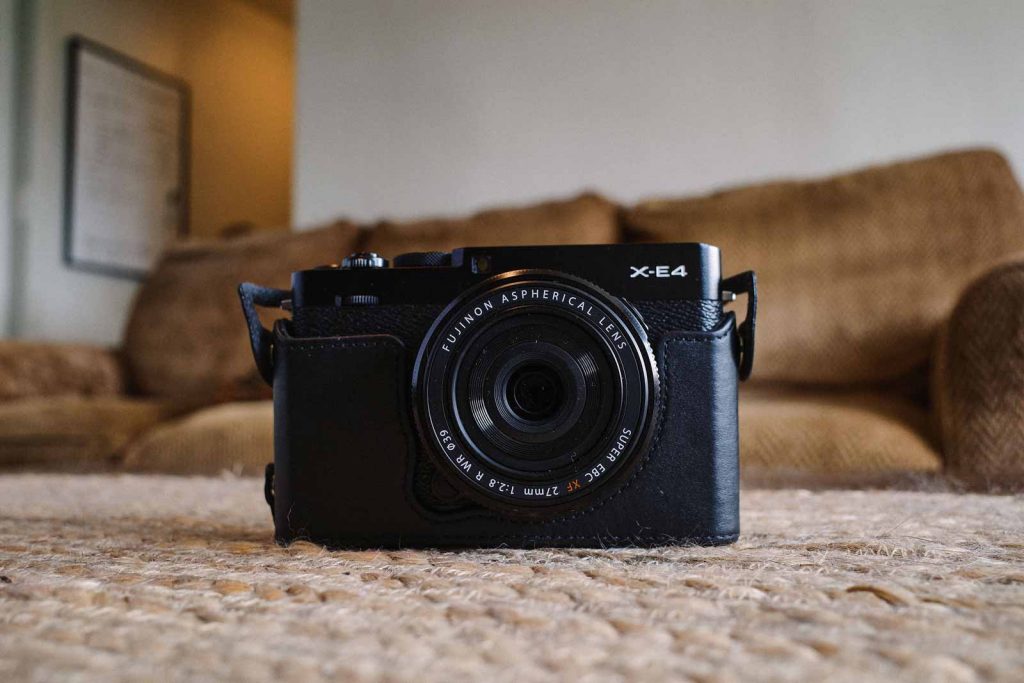
I prefer to go out shooting with the smallest amount of gear possible. Usually, that means just a camera and a lens and nothing else.
Taking extra lenses with you means you have more stuff weighing you down, and changing lenses can distract you and cause you to miss shots.
Luckily, street photography doesn’t require you to have a lot of gear. You can do everything you need in street photography with just a camera and lens. Add a flash for street photographers who like that style, and that’s about it.
I think it’s a good idea to just take out one focal length and shoot that lens for the duration of your street photography session. But there are occasions when you might want to have more than one lens option; I just wouldn’t do it for every session personally. I would rather think in one focal length, as I just work better that way.
I like shooting with minimal street photography gear because it helps to clear your mind and just shoot within the parameters that you’re given.
8) Get Out And Shoot
This is a blatantly obvious street photography tip, but you can’t make street photographs unless you get out in the streets. I say this because I need to hear it myself sometimes. The work I want to create won’t produce itself — I have to get out there and make it.
The work I want to put out into the world won’t happen when I’m scrolling through social media or whatever else I do to waste time.
More times than I can count, I was doing something unproductive when I could have been out doing street photography. You have to motivate yourself and put in the work if you want to have any results that you will be proud of with street photography.
All the street photography tips in the world won’t help if you don’t get out there and photograph.
9) Use Small Apertures to Get More In Focus
There are always exceptions to the rule, but my view on street photography is that it shows people in the context of the places they inhabit. That means showing people and the scenes you photograph them in.
The way to get both subject and background focus is to use a small aperture when shooting street photography. I try to shoot between f/8 and f/11 because these are relatively small apertures that don’t suffer from diffraction, diminishing your image quality. With most lenses, you can shoot up to f/11 without reducing your image quality much.
I generally shoot at the highest aperture possible given the light and my camera/lens’ performance to get everything in focus with the best image quality possible.
10) Use Aperture Priority Mode in Strong Light
I think your mental energy is much better spent on composing your shots rather than on your camera settings. Aperture priority mode and other semi-automatic camera modes can help you focus on the more important things.
If you pair aperture priority mode with auto ISO for street photography, you just pick your aperture, and the camera calculates shutter speed and ISO for you.
Aperture priority mode is great for street photography when working with good light because you have enough light to pick a small aperture and let the camera take over. In strong light, the camera will be able to select a fast enough shutter speed and a low enough ISO that you’ll be able to get good exposures.
11) Use Shutter Priority Mode in Low Light
Getting good, consistent exposures when shooting street photography at night can be challenging. Sometimes you have to accept lower image quality to get bright enough exposures. In some cases, shutter priority mode can help you get the best image quality possible in low light. After choosing your shutter speed for street photography (as low as you can go without motion blur), your camera should at least keep your ISO to a minimum to preserve image quality.
In daylight conditions, I don’t like to let the camera decide my aperture because I want control over the depth of field, which I usually want to be as deep as possible. When you’re shooting at night in low light, though, you don’t have the luxury of shooting with such small apertures. So it’s OK to let the camera decide the aperture considering it will be a wide aperture anyway.
12) Auto ISO Can Be Very Helpful
Back in the days of film cameras, you couldn’t change your ISO once you loaded your film. Now with digital cameras, it’s really nice to have the flexibility of changing your ISO for street photography on the fly. And for the most part, digital cameras do a pretty good job calculating exposure in automatic modes.
Auto ISO is a camera feature that frees your mind to focus on composition. As a result, you don’t have to spend as much mental energy adjusting your ISO — and the correct ISO can constantly be changing depending on the light. Of course, sometimes ISO isn’t always appropriate because you’ll want more control over your exposure in some circumstances, but there’s nothing unprofessional about auto ISO.
13) Photograph Your Hometown Inside & Out
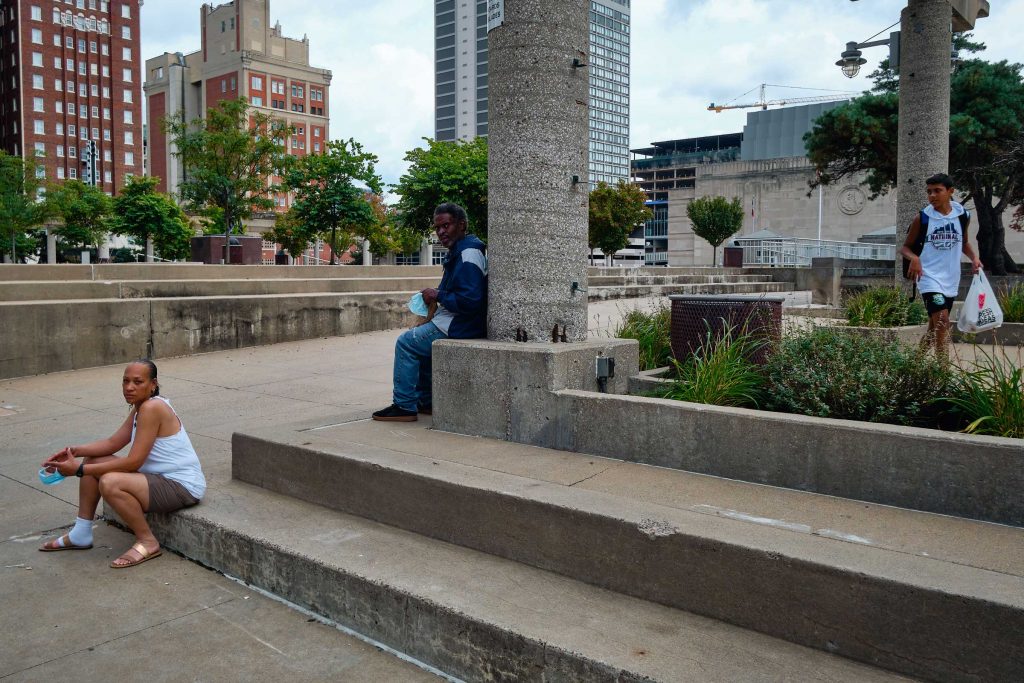
There’s nothing wrong with traveling to do street photography. In fact, I’ve traveled extensively, partly to do street photography, and was inspired to travel to Brazil and ended up staying three years. But living in an interesting city for street photography won’t magically make you a better photographer.
That’s why I think you should photograph your hometown before venturing out, even if you think your hometown is uninspiring or boring. While you might think your hometown is uninteresting, outsiders may find it totally novel. Living in a smaller city also means fewer people have photographed it, giving you a unique angle that other street photographers haven’t shot.
The annoying thing about photographing in smaller cities is that sometimes there are far fewer people to photograph than in larger cities. But you have to work with what you’ve got, and it can force you to come up with something creative.
So before you pack your bags to photograph some exotic location, consider documenting your hometown.
14) Use Street Photography to Explore When Traveling
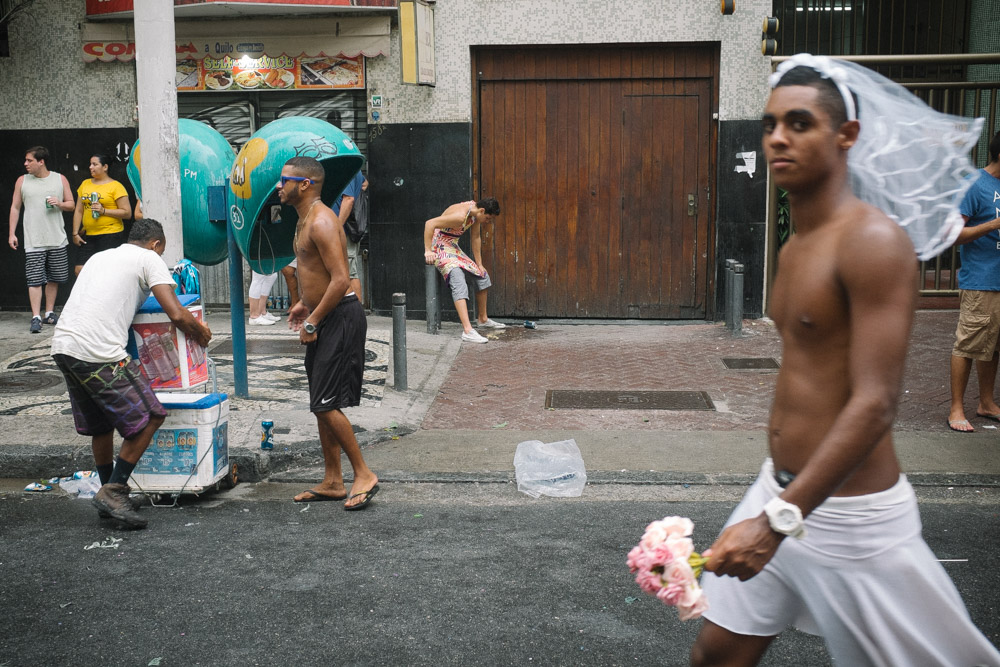
Doing street photography is one of the best ways to explore new cities when traveling. It gets you off the beaten path and gives you permission to wander, which allows you to see more of a place than just its typical tourist attractions. I would rather get lost and explore a place on foot than be in a tourist group.
Cities have so many unique things to explore about them, and no city is the same. I’ve been on trips where I’ve been lazy and had a tendency to want to stay in my hotel or whatever, but not when I have my camera. Having my camera makes me want to get out and explore.
15) Photograph On Your Way to Work & Other Activities

Some of my best street photographs from when I was living in Brazil resulted from me photographing on my way to work to teach English classes. My commute was about a 20-minute walk, and I would also have to go from location to location for different classes, so I would also photograph those walks.
I definitely don’t prefer to do street photography this way — I would much rather have an open schedule where I can set aside an entire day or a few hours just to focus on street photography. My mind is clearer this way, and I’m not worried about getting somewhere on time. But you don’t always have the luxury or the time to just do street photography, so you might as well make the most of the time that you’re out on the street.
Out of all my own street photography tips, this may be the one most difficult for me to put into practice because having to be somewhere is distracting.
16) Shoot Around Bus Stops & Other Public Transportation

Bus stops and subway stations are great for street photography because people are constantly milling about them. Bus stops are particularly good places to shoot in smaller cities where there aren’t that many people out on the street. If you can’t find people on the street, you’ll likely be able to find some at the bus stop.
Another nice thing about bus stops is that people will sit and stand there, so you have at least some non-moving subjects to photograph, making things easier. Of course, buses and subway trains themselves can make for interesting compositions as well.
17) Make Time Specifically for Street Photography
I do my best work when I set aside time to do street photography. So I like knowing that I have time to focus exclusively on street photography.
It’s great to take your camera with you at all times and photograph during your day-to-day life. However, my real preference is having a full day free for street photography and only returning home when I get tired and my feet can no longer carry me any further.
These are my most fulfilling sessions, and I photograph without a care in the world.
18) Always Take a Camera With You
It’s a good idea to always be on the lookout for photos. Of course, you can’t get a great shot every time you walk down the street, but the more you take photos, the more likely you are to get a keeper. Always having a camera with you keeps your eye sharp.
I’ve found that if I get busy and don’t have many opportunities to practice street photography for a long time, it feels like my skills suffer some, and it takes some adjusting to get back into the swing of things. If you always have a camera on you, though, you have both the opportunity to get some great photos while going through your day-to-day life, and you keep your skills sharp.
My favorite camera to have with me at all times is the Ricoh GR III. It’s pocket-sized, so it’s easy to take with you everywhere, and it has incredible image quality for a camera of its size. I have other cameras for other purposes, but I’ll probably always have the most up-to-date Ricoh GR camera, as it’s such an excellent and small tool that you can have with you at all times.
19) Wear Comfortable Walking Shoes
Street photography involves a lot of walking, so it makes sense to find the most comfortable brand of shoes for you and stick with them. You really start to feel the weight on your feet after you’ve been out on the street for a few hours. Good shoes will let you stay out a bit longer and will, of course, be better for your feet and back in the long run.
20) Start Off With Short Street Photography Sessions
When you’re just starting out with street photography, it can be nice to plan on just shooting for a short period, such as 30 minutes to an hour. This can help you face your fears of photographing people in the streets because you have in the back of your mind that you’ll be done soon.
This is the most comforting of my street photography tips because it just gives you some peace of mind knowing that you’re not “stuck” photographing, and it can make you more productive during those sessions.
21) Photographing More Will Help Conquer Your Fears
Doing street photography can feel very awkward at first. Once you’ve photographed more and more, though, you start to notice that nothing negative is going to happen for the most part. Of course, sometimes you may ruffle some feathers, but confrontations aren’t all that common, and usually, nothing bad comes of them.
The more you photograph, the fewer reservations you have about doing street photography.
22) Use a Wide to “Normal” Focal Length Lens
In my opinion, the best focal lengths for street photography lie somewhere between 28mm and 50mm, with 35mm being the focal length I’m most drawn to. I like 35mm lenses for street photography because they provide a wide-angle perspective, but not too wide. A 35mm forces you to get somewhat close to your subjects, but you don’t have to stick your camera right in people’s faces. 35mm lenses also let you get plenty of background context in your photos without being too busy.
28mm lenses are also great for street photography, but you have to pay more attention to your compositions to make sure they’re not too busy, as they’re pretty wide. If you like context in street photos, 28mm lenses give you a lot of it. Because they’re so wide, they’re great for tight areas, like places with narrow sidewalks or inside buses or trains.
50mm is a good street photography focal length to experiment with also. It allows for more distance between you and your subjects. If you want something with a little more reach but not as tight as a 50, 40mm lenses are not a bad option for street photography either.
The longest focal length I would use for street photography is around 85mm. When you get past that point, the compression looks inappropriate for street photography, in my opinion.
Related Articles:
23) Photograph In Busy Areas

People are what make street photography interesting. Some would say photos have to have people in them to be considered street photography.
So if you want to do street photography with people in it, you need to go where the people are. That may mean going to a certain part of town or around public transportation. Not that it’s impossible, but it’s hard to get anything going in an area with very little foot traffic. This may mean planning ahead to find a way to get to those better street photography areas.
24) Know Your Camera Settings Second Nature
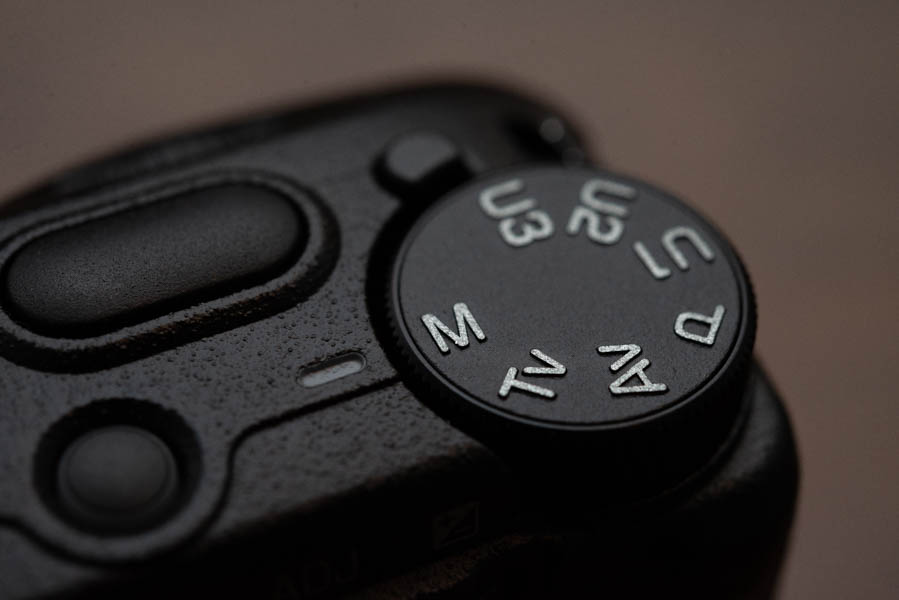
The better you know how your camera settings work and your camera’s layout, the less time you’ll waste trying to get your exposures down while out on the street. It’s good to know how to shoot your camera in full manual and all the other metering modes, as they can come in handy depending on the circumstances.
I want my camera to be as much of an extension of my eye as possible so that I can just focus on what’s important. If I have to adjust my street photography camera settings, I want it to be as quick as possible, which means knowing my camera inside and out.
25) Seek out Good Light
My biggest weakness when I started out in street photography was probably not putting any thought into finding good light. I would just go out and shoot willy nilly and not think about the light. These days, I would rather shoot in pockets of light rather than in flat light in total shadow.
I also like to shoot frames that are partly in sunlight and partly in shadow, which creates a nice contrast between different parts of the frame. I would also usually prefer to shoot in full sunlight than shadow.
You may disagree with this shooting style, but the important thing is to find out the type of light you gravitate to and seek that out when you’re on the streets.
26) Start Off Photographing Single Subject Compositions

I’m not particularly fond of street photos with just one subject, although they can work very well. Multi-subject photos with lots of layers resonate more with me.
But when you’re starting out, photographing single subjects is great. It gets you used to doing street photography is the main thing. And if you like the look of single-subject images, then great.
Photographing single subjects may also be your only option in low-trafficked areas.
27) Use Storefronts As Backgrounds
Having a defined background layer helps to keep your compositions uncluttered. A great way to make sure your compositions aren’t distracting/busy is to photograph subjects towards storefronts.
Photographing toward the street can work, but the background will be further away, making it harder to get clean compositions. It’s just more likely that your photos will work when you shoot towards walls and storefronts.
28) Feature Anchor Subjects In Your Compositions
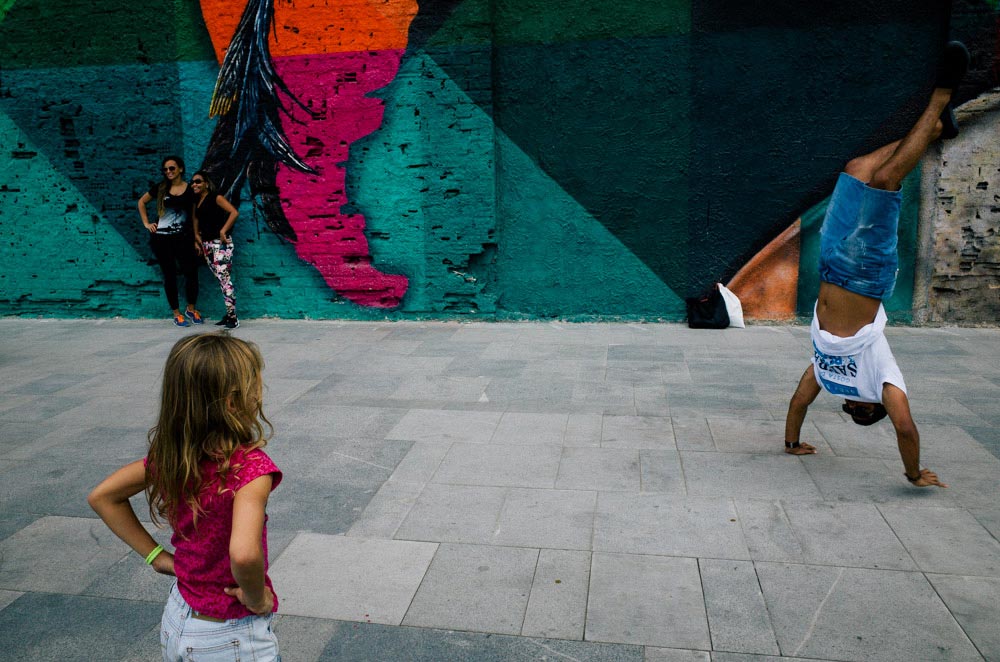
If you like shooting street photos with multiple subjects, a good place to work from is to use what I call “anchor subjects.” What I mean by this is to find static subjects (usually a person staying in one place), put that subject in one part of your frame, and then let other subjects walk into the frame.
I tend to place these subjects in the front corners of the frame as the first layer. But you can put anchor subjects in any part of the frame.
29) Use The Hyperfocal Distance of Your Lens
A lens’s hyperfocal distance is a point at which you can focus and have the whole frame in reasonably sharp focus. Hyperfocal distance depends on the focal length of your lens and the aperture you use.
Some hyperfocal lengths of some commonly-used lenses for street photography include:
- 28mm:
- f/8: 10.8 feet (3.3 meters)
- f/11: 7.7 feet (2.3 meters)
- 35mm:
- f/8: 17 feet (5.2 meters)
- f/11: 12 feet (3.7 meters)
- 50mm:
- f/8: 34.3 feet (10.5 meters)
- f/11: 24.3 (7.4 meters)
By knowing these hyperfocal length distances, you become a lot less dependent on autofocus. In fact, you don’t even have to adjust your focus if you don’t want to. As long as you have enough light to shoot at small enough apertures, you can use these distances to have pretty much everything in your frame in focus.
30) Try to Capture Emotions
The best street photographs evoke emotion and tell some sort of story. That may come from a gesture that someone makes or emotion displayed directly on someone’s face. Sometimes photographs evoke emotion simply because of how subjects interact with the rest of the frame.
Capturing emotion may mean seeing it and photographing it directly on the street or realizing it in a photo when going through the editing process. As far as street photography tips go, this may be one of the harder ones to actually put in practice when you’re out in the field.
31) Learn From The Other Types of Photography You Shoot
I used to work as a second shooter for a wedding photographer. While I would have preferred to have been doing street photography, I learned a lot, and it helped develop my vision as a photographer. Photographing weddings was great because the photographer I worked for had a similar style, and we approached pretty much everything like you would in street or documentary photography.
We shot in a layered style with multiple subjects, just like our favorite street photographers approach shooting in the streets. And the great thing about weddings is that people are a bit less self-conscious about having their photo taken when they noticed. People in the street can be really taken aback and get confused about why you might be photographing them, whereas wedding guests know the bride and groom hired a wedding photographer to shoot the wedding day.
The same thing goes for things like event photography and family photography. I photograph these in a similar way. I try to focus on the focal point of the day (the birthday boy/girl, the lead singer of a band, etc.) and show that person interacting with the other people at the event. I may do some shots that single out a subject, but for the most part, I try to incorporate multiple subjects to create layers, which, again, is my approach to street photography.
Shooting other types of photography not only keeps your eye sharp but also forces you to learn your camera better. Sometimes I come across new features of my camera or a different shooting method that I wouldn’t have thought of before while doing street photography. Then I shoot some other type of photography and realize something new that could help my street photography.
32) Let Subjects Enter Your Frame
When I was first starting out in street photography, there was a short period where I would photograph almost every subject imaginable while walking around. Now, I’m a lot more choosy when it comes to taking exposures, and I often find a background that I like and let subjects walk into the frame. I think you get a lot more keepers this way, and you’re better able to control backgrounds and compositions.
When I shoot like this, I keep it quick. I don’t really like to hold my camera up to a background and just wait; I first wait and look, just using my eyes to see who’s coming in and out of the frame. Then, when I see someone coming into the frame, I quickly bring my camera up and compose the shot. I do it like this because if people notice that you’re trying to photograph in that direction, sometimes they’ll walk around you to stay out of the frame for whatever reason.
This concept can be difficult to wrap your head around when you’re just starting out in street photography because you want to be constantly moving and taking photos. However, if you can have some patience, this is one of my favorite street photography tips because it gets you out of the reflexive run-and-gun style of shooting.
33) Try to Divide Your Frame Somewhat Evenly
When placing subjects in the frame, I try to space subjects out as evenly as possible, with minimum overlap. This makes for less busy, more visually pleasing compositions.
34) Pay Attention to the Edges of Your Frame
It’s easy to focus too much on subjects while you’re out shooting that you end up not paying enough attention to your overall composition. A good way to improve your overall composition is to place more importance on the edges of your frame.
When you focus too much on the subjects in your frames, you tend to put the main subject smack dab in the middle of the frame, which usually doesn’t make for very interesting compositions.
The other thing that can happen is that when you ignore the edges of the frame, you end up with distractions in the edges and corners and you may feel compelled to crop them out. I always try to crop as little as possible to make the photo as true to the original as possible and to utilize the camera’s full sensor.
Keeping an eye on the edges of the frame has helped me get better overall compositions that I’m more consistently happy with.
35) Find Contrasty Scenes
Having some contrast and deep shadows in street photos makes for the most compelling compositions, in my opinion.
You can find this sort of light by looking for pockets of light where part of your frame is in direct sunlight, and other parts of the frame are cast in shadow. On a related note, you can get nice contrasty shadows by shooting with the sun to your side.
Out of these street photography tips, this one may have taken me the longest to internalize because I was always looking for subjects rather than looking for good light.
36) Experiment with Silhouettes
You don’t always have to expose for your subjects — you can expose for the sky or other bright areas of the scene. And that goes for when you’re editing your photos, too — you don’t have to bring shadows up if it’s going to weaken the image. Sometimes silhouettes can work really well, so consider it when you’re shooting a strongly backlit scene.
37) Don’t Worry About Shooting “Decisive Moments”
If you’ve been around street photography for any amount of time, you’ve no doubt heard of how Henri Cartier-Bresson popularized photographing “decisive moments.” These are fleeting moments when people take some sort of dramatic action, and you just have to be there to record it.
I have nothing against photographing these moments if one unfolds in front of you. My issue with it is that you might miss the moment if you wait around for them to happen.
Another thing is that when you photograph people, decisive moments are basically happening all the time. Decisive moments don’t have to be something as dramatic as jumping over a puddle. It could be something as simple as a facial expression or how light falls on someone.
So what works for me is I like to take a bunch of shots once I find a scene that’s working. Choosing the decisive moment then comes later in the editing process.
38) Use The “Fishing” Technique

The fishing technique refers to finding a suitable background you like and waiting until a subject or subjects enter the frame. You can create various styles using this technique, whether it be just someone walking in front of an interesting wall, creating an optical illusion of some sort, or whatever you can think of.
An experienced fisherman drops his line and waits. And has the patience to keep waiting. You need the same patience for using the fishing technique in street photography. Instead of dropping a fishing line in some water, you stay at a location with your camera at the ready until the right opportunity presents itself.
When practicing street photography in this style, I prefer to take a lot of shots at the scene as people come in and out of the frame. Once I’m in the editing process is when I decide which shot to keep, if there is one worth keeping.
39) Study Why The Masters of Street Photography Are Good
One of the best ways to get better at street photography is to really dig in and study the work of the great street photographers of the genre. Take a book (or even a single image) from one of the legends of street photography and go over it front to back many times over. You start to pick up on patterns and similarities within a photographer’s work.
Think about how the street photographer may have approached the shot. How does the photograph make you feel — scared? Angry? Sad? Inspired? Curious? What emotions do you think the photographer intended to evoke? Why do you think the photographer selected that image?
Think about the color palette within the frame and why it works visually on a technical level. How did the photographer position the subjects within the frame? What is the light like, and how may the photographer have found it?
40) Be Polite if Someone Confronts You
If someone on the street loses their mind on you, that doesn’t mean you have to return the favor. Usually, that’s not going to happen, but if it does, escalating the situation will only lead to a more negative outcome.
When someone confronts me on the street, my goal is to keep my cool and be as polite as possible. I’ll delete photos if that’s what the person wants. Before it gets to the point of deleting photos, I like to at least try to quickly explain myself and show the person my portfolio so they at least have the chance to see that I’m working on something artistic.
I still carry a small printed portfolio around with me, but I’m working on getting my portfolio site back up and setting up a QR code that people can scan to visit my portfolio from their phone on the spot.
In the rare scenarios I’ve experienced when someone was irate with me, I kept the interaction as short as possible and moved on. There’s no reason to bring yourself to the level of a person like that, who may just be having a bad day.
Related articles:
41) Keep Your Compositions Free of Clutter
I love complex, layered street photographs, but you have to shoot with intention and edit meticulously because they’re harder to pull off successfully than more straightforward street photos. You have to be prepared to admit when an image doesn’t work if it’s too cluttered.
One thing I do that results in less cluttered compositions is to look around the edges of the frame while photographing. You can exclude anything that would detract from the photo by doing this. It’s also much easier to take clean shots when you stop and photograph in front of a background that interests you rather than photographing while walking.
Out of all of these street photography tips, this is probably the one that’s most easier said than done.
42) Use Layers
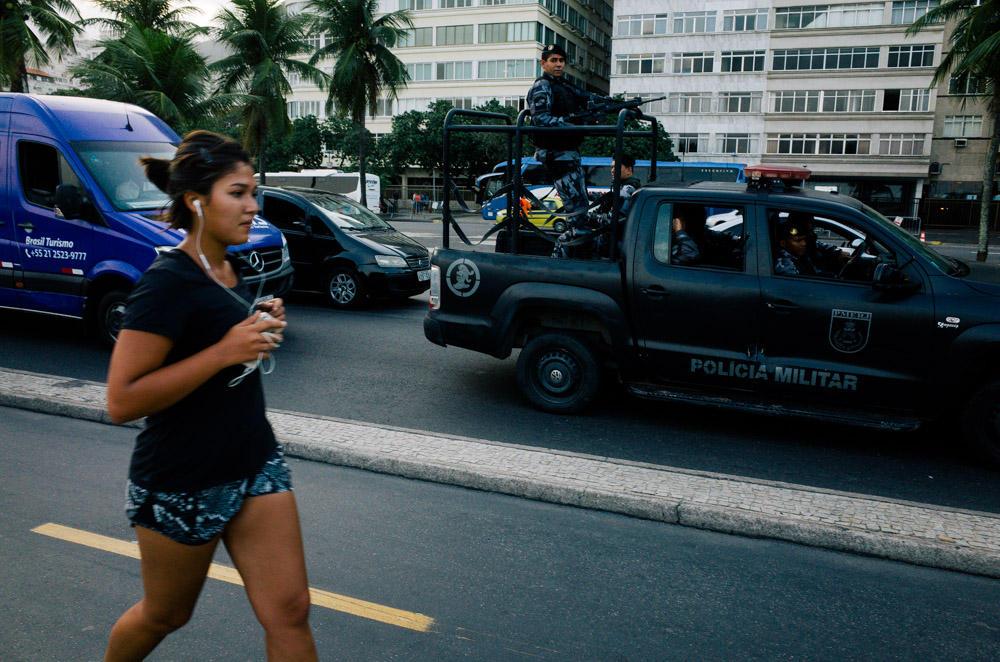
Layers create a dynamic and visual interest in street photographs. Layers invite the viewer to explore the frame in its entirety and takes them on a journey in a sense.
When I think of layers, I think of subjects and backgrounds going in different directions, which creates a sense of movement in the photo. Using layers in street photos doesn’t have to result in complex compositions, but it can. The point is that when you start thinking in layers and paying more attention to them when you’re editing, you start getting more visual interest in your photos.
43) Complexity Works When It’s Controlled
Complexity is great in street photography, as long as it’s under control and doesn’t devolve into chaos. A lot of what makes a complex street photo worth keeping happens in the culling process.
It’s difficult to let go, but I would rather throw out a photo if it only sort of works because it’s overly complex. There’s a fine line between complex photos that work and complex photos that have a composition that just barely falls apart in some way.
44) Street Photography Image Quality Can Be Flawed
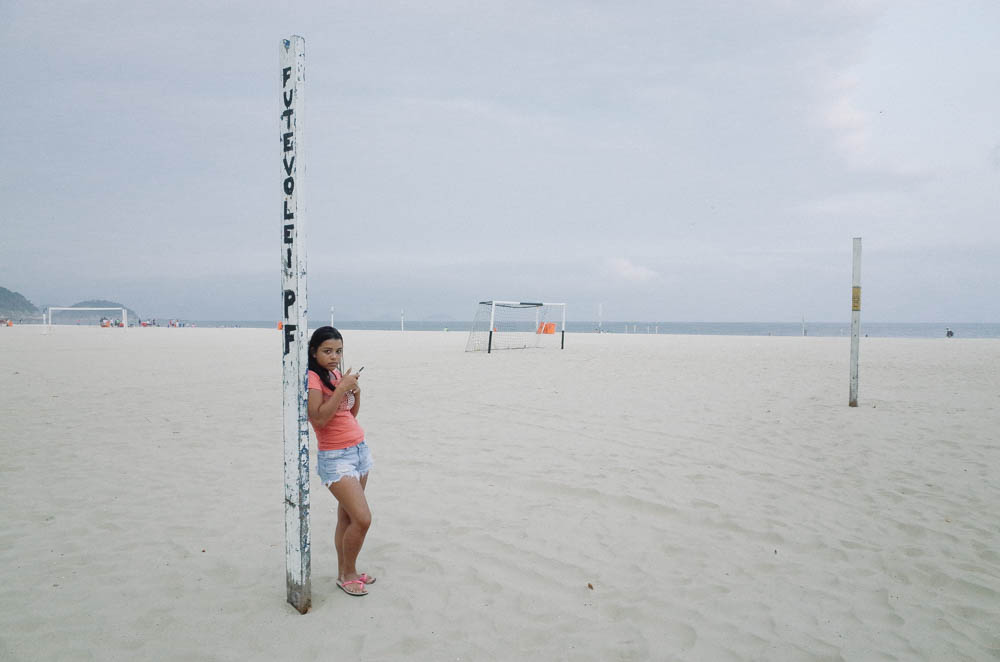
I love street photography because you show a version of real life, warts and all. That also means you don’t have to worry about having perfect image quality.
With street photography, it’s not like you’re shooting glamor shots for clients. You don’t have to do heavy photo editing like portrait, wedding, and advertising clients may expect.
Many street photography masterpieces were shot on cameras that would be considered primitive today. Some of these photos have terrible image quality on a technical level. Despite “bad” image quality, these photos have stood the test of time, and people are still enjoying them many decades later.
If you’re like me and find heavy processing tedious, street photography is great because you don’t have to put a ton of time into editing street photos. I basically just stick to color adjustments, contrast, and sharpening with my street photos.
45) You Must Have Patience
Street photography requires an almost endless amount of patience. The vast majority of your photos are not going to be good. Unfortunately, many of them will be absolutely terrible, which can be disappointing.
With that said, you have to keep in mind that that’s just part of the game. On some level, street photography is about volume. You have to take many photos to get to the ones that are worth keeping.
It’s easier said than done, but you can’t expect to get a great photo every time you go out for a street photography session. The more you get out there, though, the faster you’ll get those great photos.
In order to be a great street photographer over the long run, this is up there with the street photography tips that you need to internalize the most.
46) You Need to Persevere to Succeed
There may be periods when you don’t get any good shots for days, weeks, or even months. The street photographers who stand the test of time are those who pushed through it and accepted failure until things finally clicked.
Good photos don’t come evenly spaced out either. For example, you may take a flurry of great images back to back or have a drought in good photos that lasts a very long time.
47) Find Out What You Don’t Like
By studying street photography, you’ll invariably learn not just what style resonates with you but also the things you don’t like in street photography. It may not be evident to you at first, but after looking at a lot of street photography, you start to notice things that other street photographers do that you don’t like.
Don’t be afraid to be decisive and define what you don’t like so that you can proactively avoid those things in your photography. That goes for the editing process, too — if you notice a photo you took that reminds you of images you don’t like from other street photographers, why would you keep it? Just because you went to a lot of trouble for a photo doesn’t make it good.
48) Avoid Cliches
I would rather not shoot street photographs that other street photographers have shot to death, so I avoid them whenever possible. What’s cliche is in the eye of the beholder, but I know it when I see it.
Some examples of cliches in street photography (in my opinion) include:
- Photos of the homeless
- Photos of buskers/street performers
- Very thin depth of field/lots of bokeh
- Up-close portraits of old people on the street with lots of wrinkles with the contrast and clarity turned all the way up
- Use of black and white for no particular reason
49) Talk With Subjects & People on the Street
Talking with people on the street when you’re doing street photography is unavoidable sometimes, so you might as well get used to it. There are many friendly and interesting people you can end up meeting, plus it opens up opportunities for better photos.
If you make some interesting small talk, you go from potentially being a weird stranger with a camera to a friendly person that people don’t mind being around. Talking with people makes them open up and be more likely to be OK with having their photo taken. Once you’ve struck up a conversation, you can use the opportunity to include the person or persons in your frame, whether as anchor subjects or by filling the frame with them.
50) Edit Sparingly
Street photography doesn’t require a lot of editing, and I like that. You get to spend more time out on the street photographing than editing.
Everyone has their own approach, but I’m not a big fan of really heavy editing for street photography. I don’t use Photoshop to remove anything or add anything. I only use CaptureOne and Lightroom to make basic adjustments to things like exposure, color, sharpness, and contrast.
I don’t like editing techniques like HDR. I think real life is fascinating enough as it is. You don’t need to take it that far away from reality.
51) Explore Genres Related to Street Photography
There are other genres of photography that you have easy access to do while you’re out on the street. The two that come to mind are cityscapes/urban landscapes (whatever you want to call them) and street portraits.
I think cityscapes can be intriguing on their own, but I also don’t see a problem with sprinkling them into a street photography project. The same goes for street portraits. I don’t think they’re anywhere near as interesting as what would traditionally be considered street photography, but I think they have their place.
You can combine cityscape photos and street portraits with your street photography, create separate projects for them, or just shoot them to keep your composition skills sharp.
52) Enjoy the Journey
Street photography involves a lot of walking, and a lot of times, you’ll come home empty-handed. That can make it feel like the day wasn’t worth it and make you question why you’re doing this.
I think the best thing you can do rather than be results-oriented about street photography is to enjoy yourself while you’re doing it. Take in the sights, sounds, and life of the street. We constantly take the beauty of the world around us for granted. Being a street photographer opens your eyes to things that other people miss.
If you let yourself enjoy the journey, every day to go out to shoot is a blast. If there’s anything you take away from these street photography tips, I hope it’s that you find fun and enjoyment in your experiences.
53) Know That Not All your Photos Will be Good
The majority of the street photos you take will not, or should not, make the cut. Street photography is a numbers game, and you have to know that if you want your work to be respected.
So when you come back home for the nth time without any photos you’re satisfied with, know that all street photographers deal with that.
Street photographers who keep several photos from every session they go out for are probably over-sharing.
54) Show Only Your Best Photos
It takes a lot of discipline to only show your best work, and it’s up to you to develop it. People don’t want to see your outtakes. They want to see the best you’ve got.
It can help get you some perspective by waiting between when you did the session and when you publish photos from it. It can also help to get an outside opinion from another photographer or editor.
55) Photograph in Bad Weather
Bad weather shouldn’t keep you from getting out on the streets to photograph unless it presents a danger, of course. Photographing in rain and snow is challenging but can make for very unique photos that will stand out from other street photography.
Not many street photographers want to brave the bad weather and trudge through the muck to get shots, but that just means more opportunity for the photographers who do get out in bad weather. Do whatever you can to protect your gear, though. Having a weather-sealed camera is ideal, and having an umbrella and/or using a protective case or bag for your camera can provide some protection.
56) Experiment Photographing from Different Heights
You don’t have to shoot everything from eye level. If you have a camera with a tilting LCD screen, it can help you take shots from up high or down low.
You can also take photos from levels of buildings higher than ground level or from on top of parking garages or whatever. You can put your camera all the way on the ground for a unique perspective.
These unique angles won’t always work, but they’re worth keeping in mind from time to time to mix things up.
57) Shoot Ongoing Projects with a Theme
Shooting with a theme in mind can inspire you to go out and seek out opportunities to add photos to the project. My projects tend to be general street photos from a place I live in or visit frequently. For me, that’s Kansas City, where I live, and Rio de Janeiro, Brazil, where I lived for a time and visit whenever I can.
Projects can be about any subject, though. So, for example, you could shoot a street photography project where all the photos incorporate taxis in one way or another. Or you could shoot a project in subways, or on buses, or a project centered around a particular color, etc.
Closing Thoughts
I hope these street photography tips help take your street photography to the next level.
There are no rules here, just suggestions. Take what resonates with you and incorporate it into your photography when you go out on the streets.
Learning street photography is a lifelong process. It takes years and years to develop your eye for the craft, and even then, great photos are few and far between. Keeping that in mind will help you avoid going crazy when you’re not seeing the results you’re expecting. Even for the best street photographers in the world, it takes time and dedication.
I encourage you to return to these street photography tips if you ever need inspiration to move your photography forward, and I plan to keep it updated.


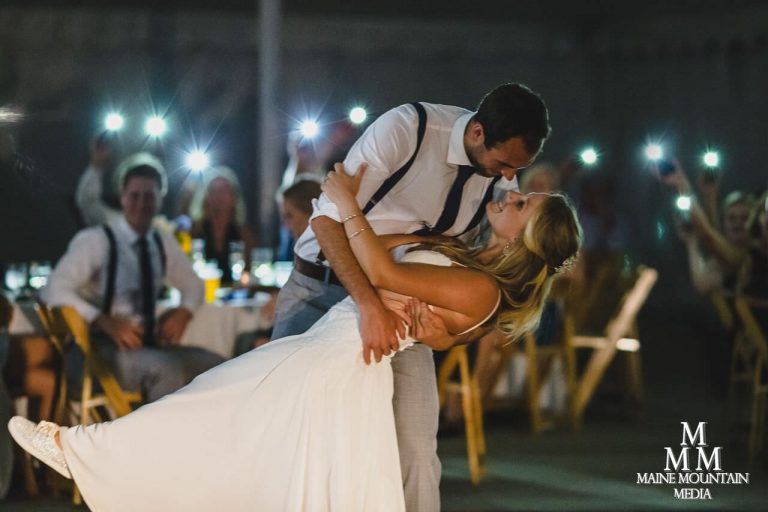

![How to Get Into Wedding Photography [A Guide for Beginners]](https://composeclick.com/wp-content/uploads/2018/01/How-to-Get-Into-Wedding-Photography-768x512.jpg)
